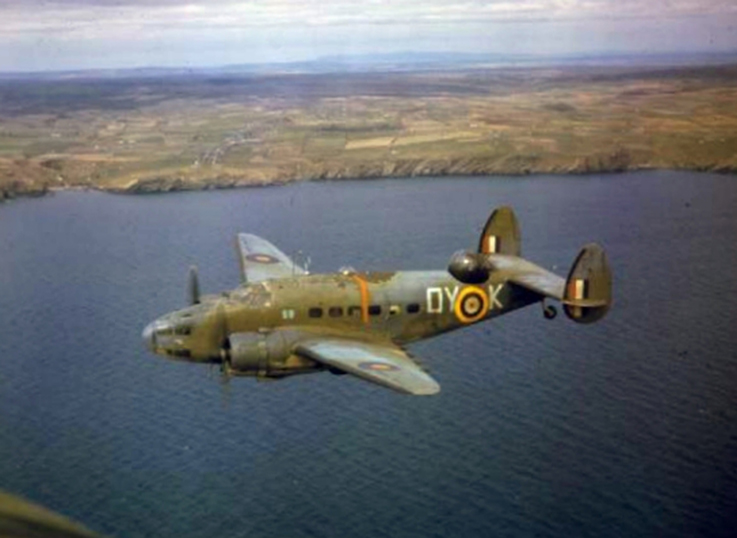Registered with the Registrar of Newspapers for India under R.N.I 53640/91
Vol. XXVII No. 13, October 16-31, 2017
Tamil Nadu- & the IAF
by Air Marshal M. Matheswaran avsm vm ph.d (retd)

An IAF aircraft from a Tamil Nadu air base.
The Japanese invasion and the fall of Singapore became a pivotal moment in the history of Madras. It led to an induction of massive forces, Indian, British, and Allied. There was a frenzy of airfield construction in Madras Presidency. A series of airfields, new as well as upgrades, were built in Madras and in many places in the Presidency and the peninsula. Some of these were St Thomas’ Mount and Sholavaram at Madras, Ulundurpet, Arkonam, Trichinopoly, Salem, Kanadukathan, Tanjore, Madurai, Kayattar, Sulur, Trivandrum, Cochin, Tirunelveli, Kolar, Yelahanka, Jalahalli, Vijayawada, Vizag, etc. Superintending Engineer U.S. Ramasundaram, head of the Southern Aviation Circle, completed the task in 1942 on a war footing, and then moved to the Eastern Aviation Circle to take on even larger tasks as that was a war zone.
All the airfields were busy with squadrons flying in and out round the clock. There were all types of aircraft: long-range maritime reconnaissance, photo recce, fighter, ground attack, transport, coastal defence, and all kinds of operations, training, and maintenance activities. Some of the aircraft types were Spitfires, Hurricanes, Tempests, Vultee Vengeance, Mosquitoes, Blenheims, Dakotas, Liberators, Thunderbolts, Harvards and Hudsons. IAF’s No 1 squadron re-equipped and trained at Trichinopoly before moving to the Burma theatre. There were nearly 30 RAF Squadrons that operated in this theatre of war. Almost all squadrons were re-equipped twice or thrice with different aircraft during the War. Hence, all these squadrons rotated between these bases for re-equipment, training, and maintenance.
IAF’s No 4 squadron, a fighter bomber squadron flying Hurricanes, re-equipped at Sulur and Yelahanka before moving to the Burma theatre. At the end of the war it re-equipped with Spitfires and gained the unique honour of being part of the British Commonwealth Occupation Forces in Japan from May 1946 to July 1947. In one of these RAF squadrons, Ezer Weizman was an enlisted member. He became a Sergeant Pilot and spent time training at Yelahanka and St. Thomas’ Mount in 1944. After the War, being a Jew, he joined the Israeli Air Force as an Officer and trained as a fighter pilot. He rose to become the Chief of Air Staff of the Israeli Air Force. After retirement, he joined politics, was the Defence Minister, and later became the President of Israel in 1993.
If you look at the map carefully, you can discern a large number of unused airfields, indicating the huge amount of aviation activities in this region during those years. After independence, the newly partitioned IAF was put into action immediately in the Kashmir conflict. Over the next two decades, the growth of the IAF was slow, and it relocated and redistributed its resources, with operations focused in the north and west, while maintenance and training centres were located more to the south. Training institutions of the IAF were setup in Tambaram, Coimbatore, Hyderabad, and Bangalore. As the IAF expanded post 1962, the training institutions and maintenance facilities expanded to cater for increased intakes and tasks.
Tambaram, an RAF station during the war, became an RIAF base post-1947. It became a major centre for training enlisted men of various trades. By 1954, the Flying Instructors School (FIS) moved from Ambala to Tambaram in Madras. Today, Tambaram is the crucible that produces highly accomplished Qualified Flying Instructors (QFI).
Sulur, near Coimbatore, was established as a Royal Navy Air Yard in 1940. It was burned down in 1942 during the Quit India agitation. RIAF took over the base in 1943 and later handed it over to the Royal Indian Navy in 1949. Named INS Hansa, the Navy operated Sea Hawks for more than a decade before handing it over to the IAF in the 1960s to move to Goa. IAF then established a BRD (Base Repair Depot) there. Since the 1980s, it is a transport and helicopter base. Since 2014, Sulur has been designated as the first LCA base. Arkonam was revived in the 1980s as INS Rajali. With the longest runway in Asia, it housed the Tu-142, long-range maritime recce aircraft, capable of covering most of the Indian Ocean. It is now replaced by the new, state-of-the-art Boeing P-8 Is.
When India mediated in the Sri Lankan crisis in 1987, Tambaram became the HQ and Base for IPKF operations. Similarly, Tambaram was again the base from which para operations were launched in 1988 to support the Maldives government. The IAF created the new Southern Air Command with its HQ at Trivandrum. Geographically this is the largest command, encompassing much of the peninsula, and includes the island territories.
It is a matter of time before more bases are activated in Tamil Nadu, and the IAF spreads its wings over the Indian Ocean. Already Thanjavur has been revived, and is set to become an Su-30 base. Similarly, expansion plans for the Andamans & Nicobar are underway. Chennai (erstwhile Madras) will continue to be the main link with these islands.
With ISRO being largely concentrated in the Peninsula, the erstwhile Madras Presidency is truly the aerospace hub of the country. The Tamil Nadu government has recognised aerospace as the sunrise industry, and new policies are being put in place to make Tamil Nadu a very attractive destination for investment.
Given the strong foundations of education, human resource, and technology orientation, Chennai and Tamil Nadu have great potential to become global aerospace hubs.
(Concluded)


Just a quibble about INS Rajali: it is not the longest runway in Asia (it is not even the longest runway in India) but the longest military runway in Asia.
Another small bit of information I read somewhere (if my memory is right) is that the Arakkonam runway of INS Rajali as it is now called was built by Italian POWs during World War 2 for the British.